| | | 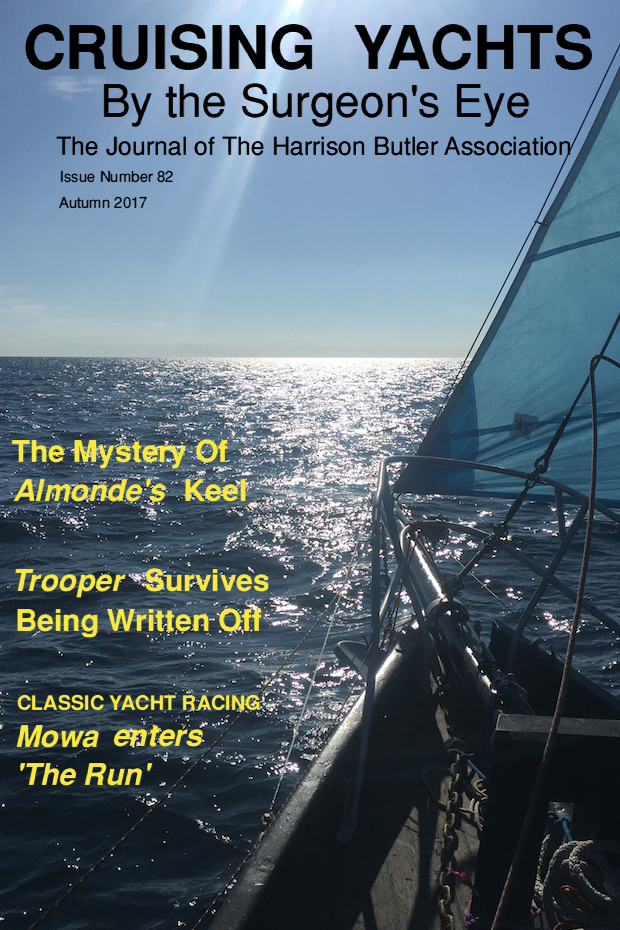
Tramontana is the only boat built to Harrison Butler's Cayuca design of 1933.
Our cover shot shows her heading for the sun across the Irish Sea.
Photograph by Martin Hansen, July 2017

The shorter days of Autumn can still provide opportunities for calm and comfortable sailing in the British Isles. Once past October, however, thoughts turn to the winter lay-up and on how best to lessen the punishment meted out by the elements. I've always assiduously wiped over the boat's engine and also any tools left on board with an oil soaked cloth by way of protection from the cold and damp air that is often particularly moisture laden at dusk. The idea is based upon the maxim that “oil and water don't mix”, so oil that is already covering metal will stop the airborne water causing the metal to rust.
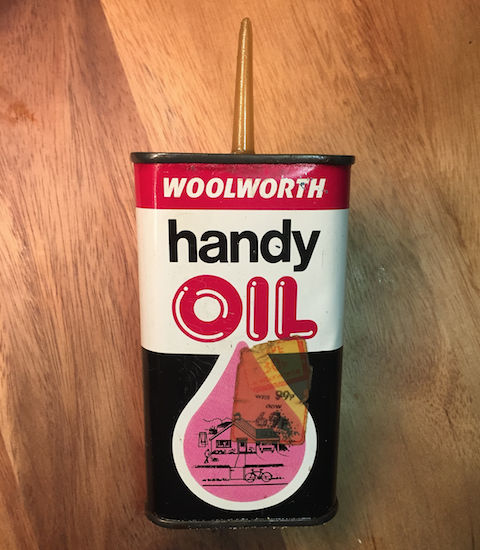
A wooden boat needs to allow for ventilation in order to stop the wood rotting. So it's a very bad idea to simply shut out the saturated Autumn air. Alas, cold air sinks below warm, and so the bilges and lower parts of the below deck accommodation can end up sitting in damp air for prolonged periods. I've certainly noticed that in the galley, brass locker catches at lower leg level tarnish far more than those at head height. The simple and inexpensive preventative measure that I'm championing in this editorial is to wipe over all metal fittings with that oil soaked cloth as part of the preparations for winter. My can of oil cost 69 pence many years ago, as you can tell by the fact that it carries the long since bankrupt Woolworth branding. It is still half full. In terms of benefit derived for the cost involved, insulating your boats metal fittings with a film of oil each winter is as good as it gets.

!•¡•! It's Canadian built, Toronto based, and derived from Harrison Butler's Englyn design; Norm Lehman's cherished Fiddler's Green is up for sale after thirty-five years of ownership. Briefly available recently was the Albert Strange designed Emerald which sold within a couple of weeks of being advertised. Similarly, the Z4 Bolduster sold within a week. Going one better, the teak built Z4 Mary Niven has changed hands without being advertised at all. One other of the Harrison Butler designed boat from the previous issue of Cruising Yachts has been sold; Australian based Tamaroa. The Hillyards Daydrema and Unity have sold. Finally, the much admired Alan Buchanan designed Admirals Cup Yacht, Hephzibah has sold.
!•¡•! Following on from his lovely treatment of Harrison Butler designed boats in the January 2017 edition of Practical Boat Owner, Peter Poland has turned his attention to those designed by Alan Buchanan in the August 2017 issue. In other magazine news, as foretold in the last issue of Cruising Yachts, a good article on the saving of the Albert Strange designed Tally Ho was published by Classic Sailor in their August/September 2017 issue.
!•¡•! The Old Gaffers Association (OGA) is offering those who have never been members before a chance to join NOW and get the remainder of this year free, a direct debit for 2018 membership of £29 not being taken until January 2018. Use this form if you would like to take them up on the offer.
!•¡•! The Lady Mary of Woodbridge has turned eighty and custodians Keith and Janet Band celebrated in style with bunting and cake. In a Facebook post a “choir” sings Happy Birthday to the spritely looking octogenarian.
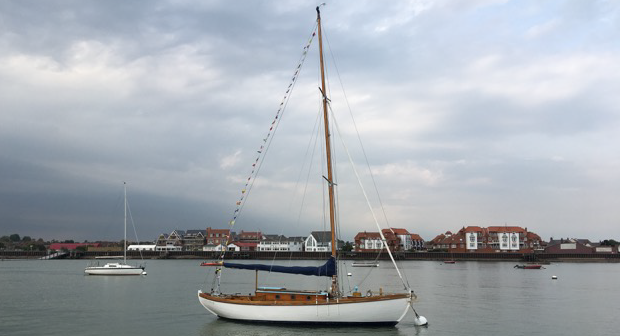
The Lady Mary of Woodbridge celebrates turning eighty adorned with bunting.
Photograph by Pauline Eden, August 2017.

Classic Yacht Racing
Mowa enters “The Run”
Myriam Spicka
The HBA's Baltic Correspondent

“The Run” is a race for Classic Yachts. Competitors are divided into four groups, each with a different starting point on the German Baltic Coast. They race overnight to the finish in Svendborg, Denmark. The four starting ports with distance in nautical miles and bearing to finish are; Flensburg (40, 070°), Schleimünde (30, 040°), Kiel (45, 020°), and Fehmarnsund (40, 340°). The starting times are adjusted to compensate for the different distances to Svendborg and the KLR rule gives small boats such as my Mowa, built to the Waterbug design, the chance to win.
Part of the character of “The Run” is that the four different starting groups have to cope with different angles to the prevailing wind, plus local wind anomalies. This year Mowa's Fehmarnsund group had to set off close hauled, while the Flensburg groups hoisted their Spinnakers for a down wind run immediately. A storm-front, rolling over the Fehmarnsund just before the start, caused several boats to immediately withdraw from the race, but sturdy Mowa thrived in the rough conditions. As the sun went down the clouds opened and the wind increased. The sea was steep and rough. During the night the wind backed south and allowed us to sail a little less hard pressed. Even so, the coaming was constantly in the water, leaving a white stripe astern in the dark sea. Towards dawn we met the group of bigger yachts from the Kiel starting group; magnificent, fast boats like the Peter von Seestermühe, Anita and Germania VI, They sped away from us and we watched their stern lights recede into the dark mist.
By mid morning, as we passed the Skjoldnaes Light heading west to Avernakø, lighter winds meant we could use Spinnaker for a home run to Svendborg Sund and the finish. Mowa give her best with 4 knots from a Force 3. The boat was steady enough for us to enjoy an extensive breakfast in the sun with lots of coffee. A little before noon we passed the starboard buoy in front of Rantzausminde and so completed the race. In the Harbour we joined the seventy other competing yachts for mooring-beer, a hot meal and sleep. That evening a warm and humerous prize ceremony was held. The final winner of all four starting-groups was Regina, built in 1936 by Abeking & Rasmussen and 15.76 meters in length. However, Mowa was first of the fourth group that started from Fehmarnsund !
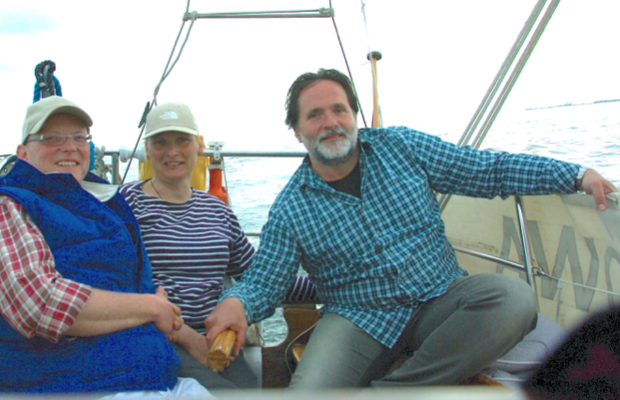
Mowa's Group 4 winning crew; Roland, Myriam and Jan

The Mystery of Almonde's Keel
Dr Stephen Hetherington
Almonde is an interpretation of Harrison Butler's Englyn design; similar sections to the original drawings but slightly enlarged by the builder. In Almonde's case it was the Dutch shipwrights at the now defunct KOK boatyard (presumably the owner's surname) who, in 1934, planked and decked her oak frames with Mulmain teak: 29 feet on deck (34 feet overall), with 9 feet of beam and 5 feet of draught.
Her name, Almonde, has nothing to do with nuts; she's actually named after the 17th century Dutch Admiral Philips van Almonde, and commissioned as a present for the retiring Captain of the Dutch Royal Yacht, the Piet Hein, itself named after a 16th/17th century Dutch equivalent of our own official, if marauding, privateers. There's a lavish memorial to Admiral Almonde in Saint Catherine's church in Brielle. When I bought her, in 2015, she had been comfortably stored in Jufferman's boatyard (near Warmond, South of Amsterdam) for some years. Just before completion of the sale, the owner, André Vink, handed over a large lever-arch file of correspondence, invoices for work done, and other papers that detailed considerable restoration over in the preceding decades, especially to her deck and rig. In all her 81 years, Almonde had never left the Netherlands.
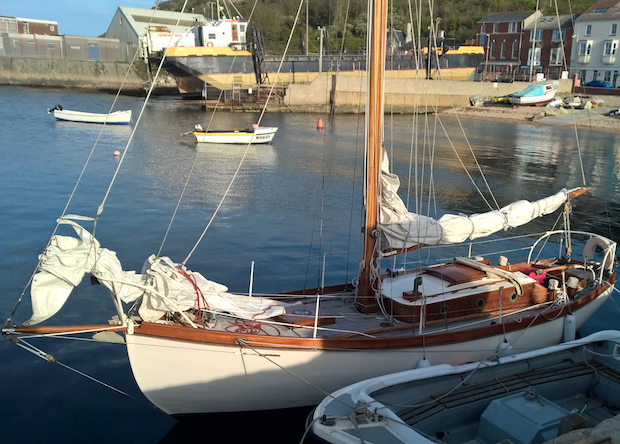
A recent photograph of Almonde in Portland Harbour, Dorset.
Her hull has been painted an attractive off-white
by her new owner, Dr Stephen Hetherington
During the usual sale processes of inspections, introspections, and survey, André had mentioned she was a little tender. In fact, I'd not seen her in the water until after the purchase. However, she had the pedigree of a Harrison Butler, was built of the best materials and in excellent condition. In any case, there was no easy place among the surrounding canals for a worthwhile sail trial. Once in the water though, she did seem to float a little high, judging by her freeboard, perhaps indicating the cause of her reported tenderness. Even a walk across the deck found her “lively” (as the shipwright, Ashley Butler, later put it). But the extent of the problem was not clear to me until sailing down the Westerschelde and into the North Sea. In only 14 knots of from the NE she was healed to the gunnels, occasionally shipping water down the side deck in stronger gusts. In one sense this was not a problem, I just had to reef early. But in another, there was something not right that needed attention. I subsequently sailed her through two summers, researching and testing things as I went, making comparisons with other Harrison Butler designed boats in sail area and ballast ratios, and making a careful review of her history. By Autumn 2016, the questions were largely answered. Much as expected right from the start, the problem was ballast. A new keel was needed.
The Harrison Butler Association Journal N° 49 (Summer 1999, pp4-5) gives the displacement of the Englyn as 5,500 kg with a lead keel of 2,360 kg, making a ballast ratio of 43%. Interestingly, it gives different weights for lead and iron keels. The latter is specified as only 1,500 kg, the assumption being, I suppose, that the balance would be made up wih internal ballast. Anyway, based on Almonde's iron keel, we calculated that to avoid any internal ballast we would have to increase the volume of the lead equivalent by adding about 5 cm to the maximum depth and slightly reshape the forward curve from the stem.
In September last year, I sailed Almonde down from Dartmouth to Ashley Butler's yard in Penpol on the Fal Estuary to start the work. Once the old keel was removed, though, all my careful calculations had to be set aside. On the crane (with its accuracy recently checked), Almonde weighed 6,200 kg, of which 2,100 kg was in the keel. Even though she was larger and heavier than the original Englyn design, Almonde had a lighter keel ! With a 34% ballast ratio it was some 25% underweight.
The next surprise was the keel itself. I had assumed this was solid iron. However, it turned out to be an iron box filled with malformed chunks of lead. As lead has a higher density than iron, it's the better material for a keel, but the air spaces between the lead blocks cancelled out the potential advantage, resulting in the same total weight as if the keel had been solid iron. At this point, confused as to what to do for the best, I sought advice from Allen Clarke of the Owen Clarke Design partnership in Dartmouth. That advice was generously given, and subsequently held in mind throughout the whole process of keel replacement.
After some thought and lot of arithmetic, it was realised that the target weight could be achieved with minor alterations to the shape of the existing keel. A template was made and adjusted until the new, proposed volume was calculated as 3,000 kg, giving a ballast ratio of 43% - the same as the original Englyn design.
The lead from the old keel was stripped out and additional blocks of lead bought to make up the weight. Then, with the steel mould finished and supported, a fire was built around it and the lead slowly added. The finished article, having cooled overnight, was then weighed, fitted and trimmed.
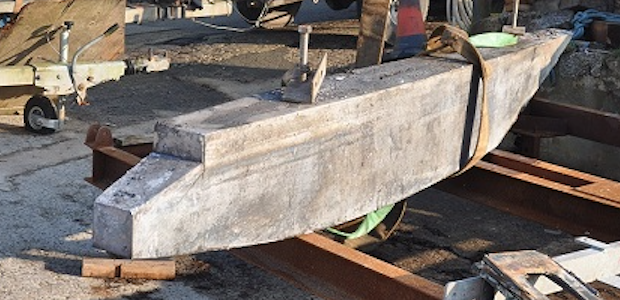
The removal of the keel exposed some weakened floors. In the end, three were replaced along with some timber around the mast step. Although this added time and cost to the job, it was better done with the interior already stripped out than as a separate task. I consoled myself by reasoning that I had thus saved money !
On Saturday 3rd June 2017 I prepared to sail Almonde for the first time since her arrival at Ashley Butler's yard the previous autumn. Motoring around her as she lay on her mooring I could see only a little decrease in freeboard, perhaps two centimetres, but no more. And she lay exactly on her waterline (marked afresh with a laser level). Out in Falmouth bay in 18 knots of wind (WSW) under full main, jib and staysail, she made 6 knots to windward with a few inches of freeboard still below the bulwark. In truth, she would have been more comfortable with a reef in the main, but that is as would be expected in winds touching force 5. All concerned agreed; the ballast problem had been solved !
The whole exercise seemed risky at first, fraught with uncertainties and exacerbated by my natural inclination not to play around unnecessarily with a fine historic yacht. Quite how the old keel came to be such a bodge job, I really don't know, but everyone involved has doubted it was the original. Still, thanks to the skills of Ashley Butler and his shipwrights, James, Jon and Graham, and the sound advice given by Allen Clarke, the work has changed Almonde from a fair-weather yacht to one able to take on great new adventures.

Eenhoorn In The Frame
Michiel Scholtes
The HBA's Netherlands Correspondent
As a solo sailor who also avoids sailing in company with other boats it is tremendously pleasing to be sent a photograph of my steel Harrison Butler derived Eenhoorn out on the water and under sail. Such a shot relies on a stranger's boat passing close by in the opposite direction with someone aboard who considers my boat to be sufficiently attractive to be worth taking a picture of. In these days of mobile phones, few boats will pass close enough to get a good shot; it rather relies on a keen photographer on the other vessel having a digital SLR camera with a zoom lens. Plus, of course, they then have to go to the effort of tracking me down. Although I've a large H121 on the sail, Eenhoorn's nameplate is tastefully small and amidships rather than being writ large on her spray dodgers. In spite of all this, I have been sent an image of my beloved Eenhoorn powering along with a reefed main on the Markermeer, a shallow freshwater lake that was intended to become reclaimed land but has instead, because of doubts about the financial feasibility of the project, become a haven for wildlife, especially seabirds. It helped that the other boat was there to observe and photograph the 50th Year Jubilee Races celebrating the building of the first Marieholm International Folkboat in 1967 when Eenhoorn happened by.
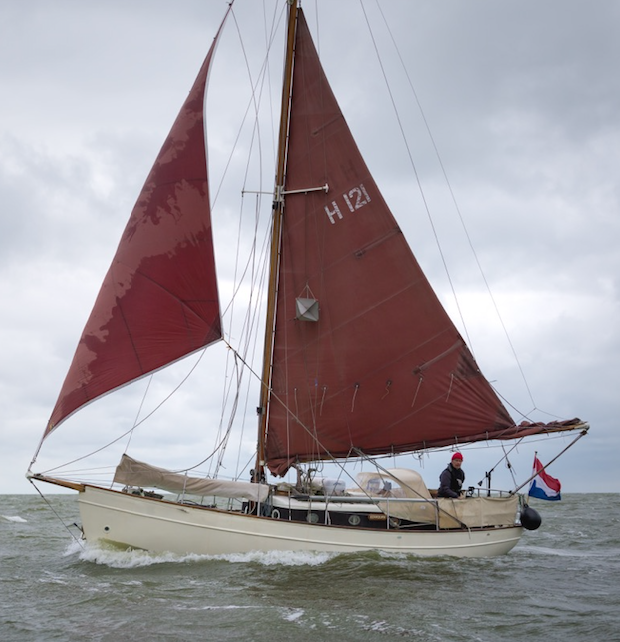
Michiel Scholtes aboard Eenhoorn
The Dutch name translates as one-horn or, better, Unicorn

Strange Greetings
Thad Danielson
The Albert Strange Association's Newsletter Editor
Purchasing a pack or two of the Albert Strange Association's Greetings cards is an excellent way to contribute to ASA funds (recently depleted in order to save Tally Ho) and also get top quality cards at a more than reasonable price. It's always worth having a few cards in the drawer for births, deaths, and marriages - Is it too early to mention Christmas ? Order your cards now from the ASA website. £8 for one pack of six different cards, £12 for two.


Trooper Survives Being Written Off
Piers Guy
This Issue's Guest Writer
I am sure that, like me, you never really imagine that you might need to draw on that boat insurance policy you have been paying into over the years, at least not for anything major. It was certainly the last thing I expected when, on a sunny Sunday afternoon in late March last year, the phone rang and the gruff tones of the Penzance Harbour Master informed me, “Mr. Guy, you'd better get down to the wet dock. There's been an accident. Your boat is still afloat, but it's not good”. In a state of shock I sped to Penzance with a growing dread at what might await. Even so, I was unprepared for what greeted me. In the northeast corner of the dock two smallish yachts were in the process of sinking, one yacht was dismasted and three other vessels were afloat but with serious damage. The cause of the destruction turned out to be the Gry Maritha, a 700 ton cargo ship which services the Isles of Scilly from Penzance and is operated by the Isles of Scilly Steamship Company (IoSSC). She had come into the dock that afternoon at high tide and had managed to miss her stern line whilst berthing. The skipper had left the fly bridge and wandered onto the main bridge but had forgotten to switch the controls over. Once he realised the ship was still moving forward he tried to go astern only to find the controls unresponsive. By the time he had gathered his wits and rushed back to the fly bridge controls it was too late. The ship ploughed into the moored boats ahead and narrowly escaped smashing headlong into the granite harbour wall. Fortunately no one had been on any of the boats or been otherwise too close when the incident happened.
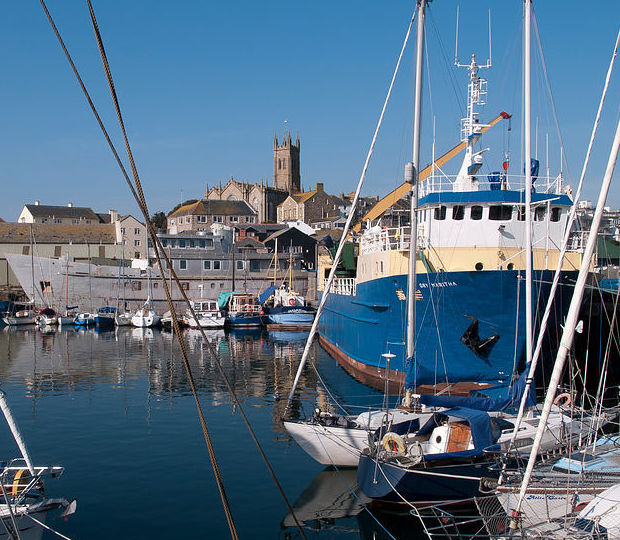
Gry Maritha amongst the yachts in Penzance Harbour.
Amongst the wreckage was Trooper, my much loved nine ton Hillyard built in 1959. My wife Lisa and I had bought her in 2009, the first boat we had ever owned, and staring down from the pier that day we realised just how much she meant to us. Alas, when Lisa and I bought her we had no real idea of her unique nature and when it came to insurance had opted for a hull value which was just a few thousand more than we had paid for the boat; a rookie error.
According to eye witness reports the Gry Maritha exerted such pressure on the pier of moored yachts that a Beneteau 32, moored on the inside of Trooper, was forced upwards out of the water. She keeled over at such an angle that her mast caught on the fixings atop the pilot house of a motor vessel lying against the harbour wall and the mast snapped as she righted herself. Trooper was hit in the aft quarter, her stainless steel railings were ripped up and the upper part of her sternpost torn away. Despite severe strain on the rigging the backstay held and the mast stayed up. The tremendous force applied through Troopers hull was enough to push the Beneteau right out of the water, to compromise the fiberglass hull of a substantial survey vessel and to flatten the Iron ladder against the harbour wall.
Our insurers are Pantaenius and within hours they had contracted David Cox, a well known boat surveyor to look over the management of the damage. It was clear Trooper needed to be hauled out as soon as possible and David recommended Falmouth Boat Co to undertake the repairs. Two weeks later David called to tell us that the quote for work would take the thick end out of £25,000 and our insurers had declared Trooper a Total Constructive Loss (TCL). The problem was that we had insured Troopers hull for £26,000 and since there was a good chance of the overall repair cost exceeding the hull value, Pantaenius had to declare a TCL. In the case of a TCL one receives the Hull Value minus what the surveyor considers is the residual value. This was all news to us. However the IoSSC had admitted full liability so we had a reasonable prospect of receiving payment for works required above the TCL value but that would be entirely at our risk. After some protracted discussion we ended up with a TCL amount of £23,500 to spend on the repair work with the risk of any overspend in the repair lying with us. Pantaenius were happy to handle the additional claims with IoSSC but would not take on the risk of IoSSC disputing the claims. On this basis work proceeded on Trooper at Falmouth Boat Co and by the end of July 2016 we had our beautiful boat back fully repaired, repainted and even sporting a new feathering prop which we had taken the opportunity to fit whilst she was out of the water. We were lucky that the damage in the end was limited and that Trooper's sternpost already had a bit of rot and so gave way well above the waterline. We were lucky that the accident was not our fault and that the ship causing the damage was insured. Had we been relying entirely on our own insurance then we would now be out of pocket had the damage been worse; had she lost her mast for example.
Despite everything, we've ended up feel very lucky to have survived such a calamity. As it turned out, we still had some of the season left and enjoyed some sailing on the south coast and in Brittany. Back from the dead, Trooper is now performing better than ever.
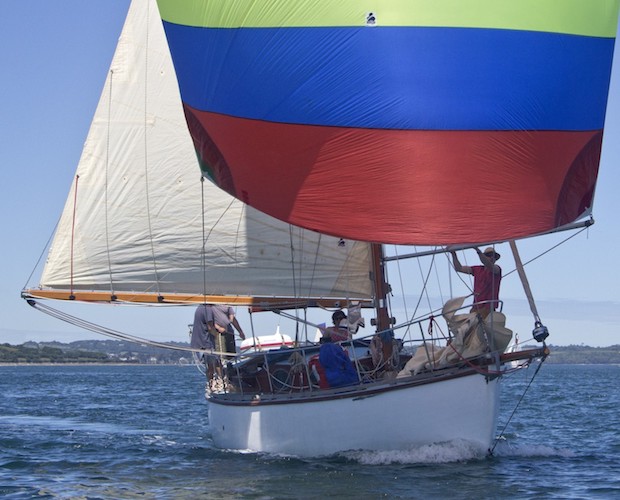
Trooper being raced at Falmouth Classics in 2014


Aquina Wood
George Chamaa is an elderly Arab American artist living in California, USA. His work is characterised by "giving a specific subject to an abstract painting" and he specialises in smooth flowing curves of varying thickness in bold textured colours. Although not typical of his work, this is one of only two sailing compositions to date. It focusses on the geometry of sails and is called simply “Sailing Boats”.
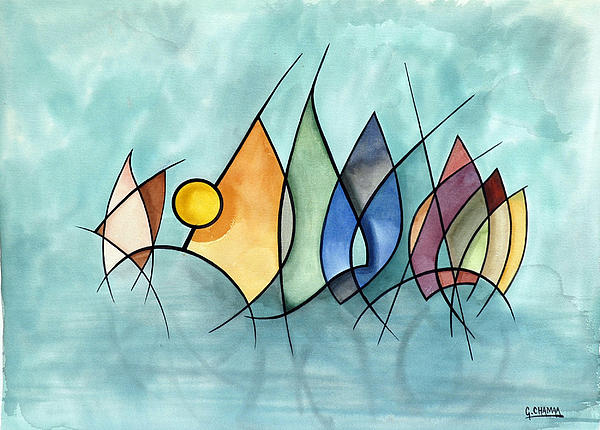
Sailing Boats by George Chamaa

Boat Spotted : Davinka
Martin Harvey
On a coach trip with a cycling club to the Golfe du Morbihan, at St Goustan, Auray, France, I saw an interesting boat and said to Lynda, my wife, “That could be built to a Harrison Butler design”. Using her camera's zoom we could just make out the name, Davinka. I immediately knew she was indeed HB because a long time ago, when she was on the river Yealm, I frequently admired and talked about her. I remember that she was so well looked after it was rumoured that she had spotless, varnished bilges !
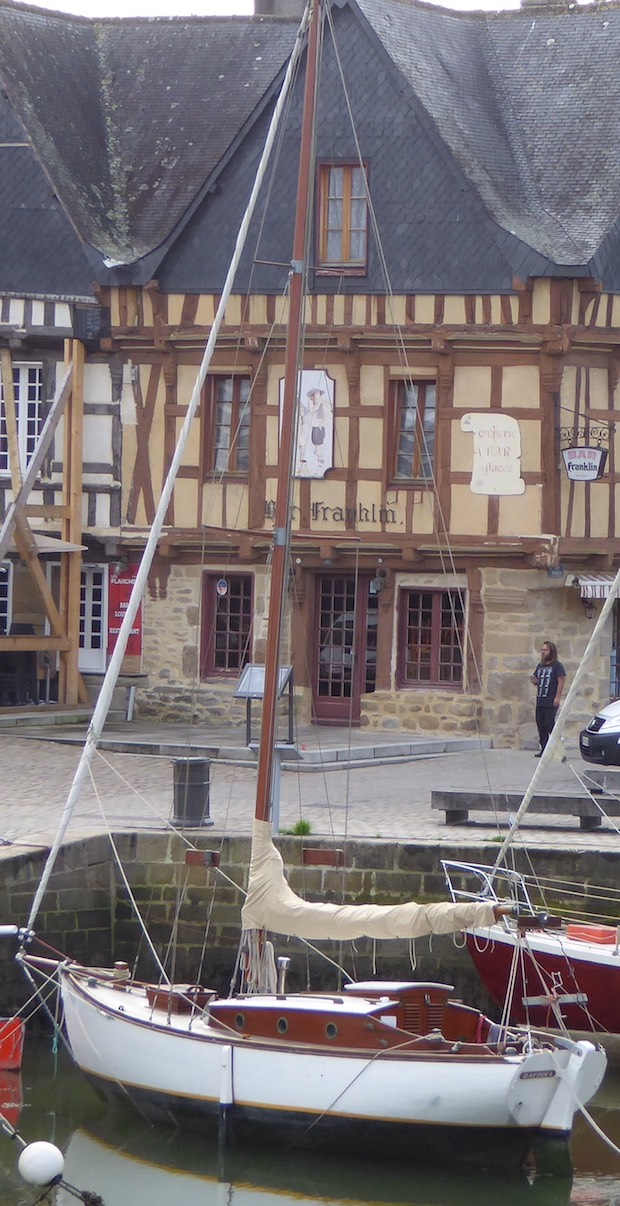
Davinka in her highly sought after berth in the photogenic town of St Goustan, France.
Photograph by Lynda Harvey, September 2017.


Featuring vessels designed by Thomas Harrison Butler,
Albert Strange, David Hillyard and Alan Buchanan.
To include your boat here,
or have it removed following a sale,
contact the Editor.
Harrison Butler designed
Caracole : Bogle Design : 1934 : Portsmouth,UK : £10,950
Cyclone : Cyclone Design : 1941 : Netherlands : £13,000
Fiddler's Green : (Derived From) Englyn Design : 1959 : Toronto, Canada : £POA
Isabella : Omega Design : 1984 : Australia : £15,300
Jacaranda : Z4 : 1938 : Frankfurt, Germany : £2,800
Jane : Bogle Design : 1939 : Cornwall, UK : £10,000
Jolanda : Omega Design : 1996 : Germany : £14,400
La Bonne : Nursery Class : 1919 : Devon, UK : £POA
Quest of Sydney : Vindilis Design : 1936 : Queensland, Australia : £POA
Saltwind : Z4 : 1940 : Spain : £19,900
Senorita : Cyclone II Design : 1934 : New Zealand : £4,000
Thule : Yonne Design : 1934 : Netherlands : £17,700 - £22,200
Watermaiden : Rose of Arden : 1939 : Cornwall : £15,950
Witte Walvis : Z4 : 1939 : Netherlands : £5,000
Zebedee : Z4 : 1938 : Ireland : £4,750
Zircon : Z4 : 1938 : River Orwell, UK : £5,500
Albert Strange designed
Sea Harmony : 1937 : Massachusetts, USA : £25,000
McGruer designed or built
Albertine : 8 ton : 1960 : Argyll and Bute : £12,000
Camellia Of Rhu : 11 ton : 1959 : Chichester : £43,500
Elona : 13 ton : 1962 : Scotland : £98,000
Inismara : 12 ton : 1963 : UK : £87,500
Rowan IV : 9 ton : 1938 : Gareloch : £18,000
Sally Of Kames : 8 ton : 1953 : Chichester : £28,500
Tiarella : 8 ton : 1953 : Rye : £19,500
Tuloa : 8 ton : 1951 : North Wales : Project, less than £3,000
David Hillyard designed
Aeolus Of Wannock : 12 ton : 1970 : Shoreham : £18,995
Billy Blue : 9 ton : 1932 : Newhaven : £25,000
Chaletta : 9 ton : 1956 : Poole : £1,000
Civetta : 11 ton : 1969 : Palma, Mallorca : £35,000
Emeritus : 8 ton : 1967 : Rye : £12,950
Golden Beaver : 28 ton : 1954 : Inverness : £94,000
Lady Grey : 9 ton : 1958 : Belfast : £24,000
Yeoman's Maid : 8 ton : 1965 : North Wales : £6,750
Alan Buchanan designed
Capella of Kent : 15 ton : 1964 : Dartmouth : £28,000
Freydis : 9 ton : 1964 : Plymouth : £21,500
Kalina : 15 ton : 1966 : Jersey : £85,000
Manureva : 26 ton : 1970 : Australia : £60,000
Merle Rose : 9 ton : 1968 : Italy : £17,750
Mintaka : 11 ton (Steel) : 1966 : Malysia : £34,400
Reina Cristina : 11 ton : 1963 : Australia : £21,300
She : 11 ton : 1962 : South Africa : £60,000
Sinbad of Abersoch : 10 ton : 1961 : Solent : £65,000
Sodalis : 9 ton : 1972 : Amsterdam : £26,000
Thendara : 8 ton : 1961 : Solent : £25,000
Willy Bolton : 35 ton : 1970 : New Zealand : £200,000

A Waterbug Restoration
Lee Shore
Simone Mancini, Head of Conservation at the National Gallery of Ireland, has been restoring a classic yacht in Dublin's Dun Laoghaire marina. The yacht is Kara Third, built to the Waterbug design, and one of the sixteen such vessels constructed in Brixham by the Uphams' yard between 1938 and 1960. It is thought that Uphams took a Harrison Butler design as their starting point, possibly his Cyclone II, but enlarged and with a fatter stern. The result was a bigger and, arguably, more sea worthy boat. Kara Third has certainly undertaken some impressive voyages, most notably one from Ireland to Greece and back in 2004. The HBA's Authentication Officer, Paul Leinthall-Cowman, has ruled that the Waterbugs are too far removed from any of Harrison Butler's designs to be considered genuine Harrison Butler designed boats. However, all sixteen are Invited Friends of the HBA.
Simone has had many perplexing issues to resolve during his restoration of Kara Third not least of which has being trying to figure out if around one ton of lead blocks, free to move around in Kara Third's bilges, should be there or not, and, if so, how to secure them. Fortunately, Myriam Spicka, who owns another of the Waterbugs, Mowa, has been able to provide photographs of the ballast arrangements on her boat. Kara Third's restoration, started in 2015, has progressed sufficiently well for her to be relaunched earlier this year.
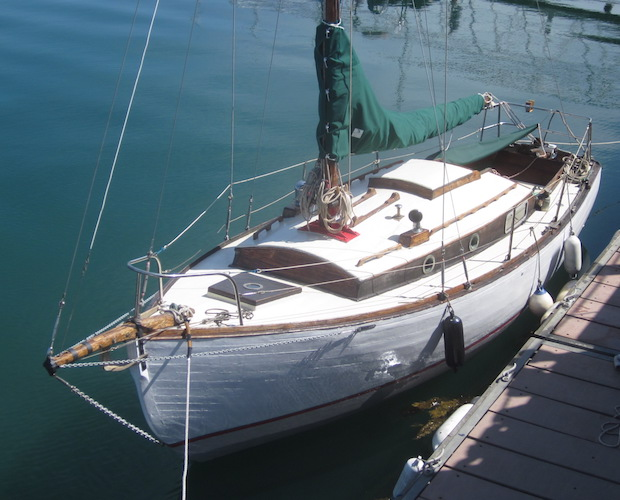
Kara Third, back in the water after a two year restoration
Photograph by Simone Mancini, July 2017

CRUISING YACHTS : By The Surgeon's Eye
Editor : Martin Hansen
Proof Reading : Dr Helen Jones
Far East Correspondent : Dr Stephen Davies
Australian Correspondent : v a c a n t
Netherlands Correspondent : Michiel Scholtes
Baltic Correspondent : Myriam Spicka
UK Correspondent for The Solent : Robert Griffiths
UK Correspondent for Dartmouth : Allen Clarke
Contributions are most welcome be they
fully formed articles, rough notes or snippets of News.
If you feel you would like to contribute on a regular basis,
applications to join our growing network
of correspondents are invited.
CRUISING YACHTS : By The Surgeon's Eye © Harrison Butler Association, 2017

“Shipping Off Scarborough Pier” by Albert Strange, 1890

| |